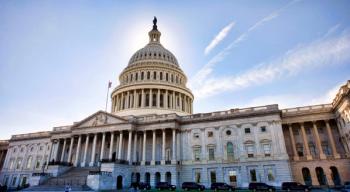
Employers grapple with changing healthcare market
New rules, taxes will alter private coverage and benefits
Employers are examining options for dealing with a host of regulations, fees and market forces reshaping the incentives and liabilities for providing worker health benefits. There has been much speculation that many employers will drop worker coverage.
Those that drop coverage will pay the $2,000-per-worker penalty rather than contend with the wave of new requirements set by the Patient Protection and Affordable Care Act (PPACA). Recent surveys indicate that only one-fourth of employers expect to be offering healthcare benefits a decade from now, and most analysts expect a decline in employment-based coverage over the next five years as exchanges and subsidies roll out. Premiums and copays have been going up for company-based health insurance, and employer coverage has declined-although not as quickly as feared a few years ago.
The delay in fully implementing the Small Business Health Options Program (SHOP) adds to concerns about small employers providing worker coverage through the new exchanges. The Centers for Medicare and Medicare Services (CMS) recently confirmed that this fall, small firms (fewer than 50 employees) will have only one plan choice through the federally facilitated exchanges. A full range of coverage options-and related premium subsidies-will not be available until 2015, although broader SHOP programs might be available earlier in states operating their own exchanges.
Multiple strategies
In response, employers are weighing a range of strategies:
• Reduce worker hours-Because the law requires companies to provide health benefits to employees working 30 hours or more, some employers are looking to reduce hours.
• Offer bare-bones coverage-While plans marketed through exchanges have to meet standards for actuarial equivalence and essential benefits, some insurers and brokers say that loopholes in PPACA may permit large self-insured companies to offer low-benefit plans.
• Self-insurance-For similar reasons, more smaller companies are adopting self-insurance, particularly firms with young, healthy workforces. To counter this trend, some states may limit access to stop-loss insurance for small groups.
• Drop high-cost plans-Employers are raising deductibles and taking other steps to avoid the looming “Cadillac tax” on high-cost health plans, which starts in 2018. There is a 40% excise tax on plan costs that exceed $10,200 for an individual, $27,500 for a family.
• Private exchanges-Insurers, brokers and benefit consultants are offering a range of products through a variety of online systems, with many plans based on defined contribution. Sears, for example, recently announced it would switch 90,000 full-time employees to defined contribution plans via a multi-carrier exchange. Highmark is offering its “MyBenefits” private exchange with a range of Blue Cross products and services to current customers in Pennsylvania, West Virginia and Delaware-self-insured and fully insured groups.
Despite uncertainties, Paul Fronstin of the Employee Benefit Research Institute (EBRI) expects most employers will continue to “play” to support recruitment, retention and productivity. Despite initial concerns about continuing coverage, “reality has set in,” he noted in a web seminar sponsored by the National Institute for Health Care Management (NIHCM). Companies now fear that the current $2,000 penalty for non-coverage will increase and that exchanges won’t be successful. Thus continued coverage may be the best strategy.
Newsletter
Get the latest industry news, event updates, and more from Managed healthcare Executive.


















































